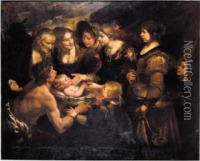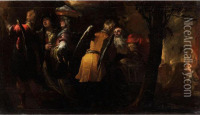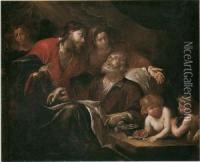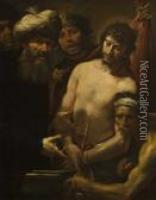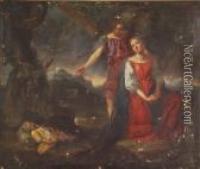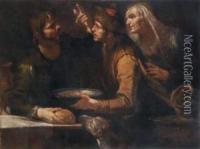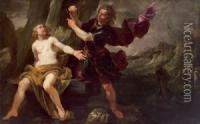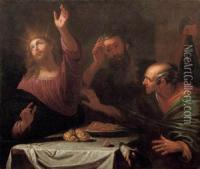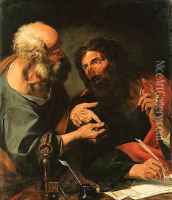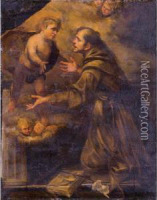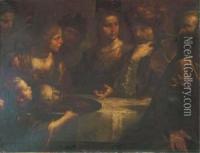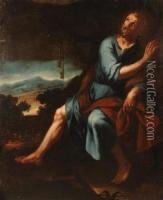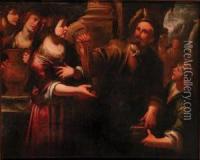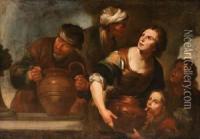Giocchino Assereto Paintings
Gioacchino Assereto was an Italian Baroque painter who was born in Genoa in 1600. His early life is not well-documented, but it is known that he was active in the early 17th century, during a period in art history characterized by dramatic expressiveness and high contrast in lighting, known as tenebrism, influenced by Caravaggio.
Assereto's works are characterized by their dramatic intensity and strong emotional content. He was particularly adept at depicting scenes from the Bible and classical antiquity with a sense of realism and theatricality. His paintings often featured powerful chiaroscuro effects, a technique that employs stark light and dark contrasts to achieve a sense of volume in modeling three-dimensional objects and figures.
Throughout his career, Assereto showed a great ability to convey human emotions, which is evident in one of his most famous works, 'The Lamentation over the Dead Christ', where the expressions of grief are strikingly vivid. Another notable work is 'Tobias Healing the Blindness of His Father', which showcases his skillful use of light to draw attention to the central subjects.
Assereto's influence was not widespread outside of Genoa, but within his hometown, he was a respected figure and his works were sought after. He founded a local tradition of painting that would influence later artists in the region. Despite his local success, he did not gain the same level of international fame as some of his contemporaries.
He continued to work and evolve as an artist until his death in 1649. Today, Assereto's works can be found in various museums and collections, where they stand as examples of the emotional power and technical skill of Genoese Baroque painting. They continue to be studied and appreciated for their contribution to the development of 17th-century Italian art.
